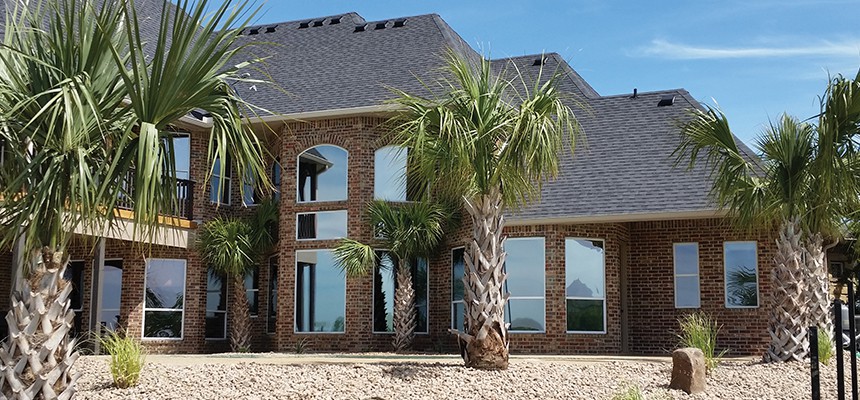How Residential Home Window Tinting Boosts Your Home's Power Performance
Residential home window tinting offers a compelling service for homeowners looking for to improve energy efficiency within their living rooms. By using specialized films to windows, it successfully decreases warm transfer, thus supporting indoor temperatures and minimizing the requirement for extreme home heating or air conditioning.
Recognizing Window Tinting
Recognizing home window tinting is vital for home owners seeking to boost both convenience and energy efficiency in their home. Residential Window Tint. Window tinting includes the application of a slim film to the inside or outside surface area of glass home windows. This movie can considerably modulate the amount of sunshine and warm that gets in a home, hence affecting interior environment conditions
There are numerous kinds of window tinting films available, each with unique buildings. For example, dyed films absorb solar power, while reflective films deflect it away from the glass surface area. Ceramic films supply a balance of presence and heat denial, making them a preferred option among homeowners. The efficiency of window tinting is often gauged by its Visible Light Transmission (VLT) portion, which indicates just how much light can pass with the movie.
Advantages of Energy Effectiveness
Window tinting not just improves aesthetics yet likewise plays a considerable function in boosting energy efficiency within household rooms. By decreasing heat transfer with windows, colored movies develop a more stable interior environment, which can cause significant decreases in energy usage for heating & cooling. This energy effectiveness translates into reduced energy expenses, supplying home owners with significant lasting savings.

In addition, window tinting enhances the convenience of living rooms. By reducing glow and obstructing hazardous UV rays, colored home windows produce a more enjoyable atmosphere, which can bring about improved health for passengers. The protection against UV rays additionally helps maintain furniture and flooring from fading, adding to the durability of home products.
Exactly How Tinting Functions
Tinting movies run via a combination of innovative products and innovations created to control the amount of solar power going into a home. Primarily made up of polyester, these films usually include metal or ceramic bits that mirror and take in heat. This twin capacity enables them to substantially decrease the infiltration of ultraviolet (UV) rays and infrared great site radiation while permitting visible light to travel through.
The effectiveness of home window tinting is gauged by its solar heat gain coefficient (SHGC), which indicates how much solar power is transferred through the window. Lower SHGC values are preferable as they denote greater warmth being rejected. Additionally, home window tints can feature a range of tones, allowing homeowners to customize their aesthetic preferences while improving power performance.
Additionally, these films work as an obstacle, avoiding heat loss throughout chillier months by mirroring interior heat back right into the living area. This thermal insulation impact enhances the air conditioning advantages obtained during warmer months, adding to a well balanced interior environment year-round. By managing solar power successfully, property window tinting not just improves comfort but likewise plays a crucial role in reducing energy intake and lowering utility expenses.
Choosing the Right Tint

There are different kinds of home window films offered, consisting of colored, metalized, and ceramic. Ceramic films give excellent warm control without compromising visibility and are extremely sturdy, making them a preferred option.
Visible light transmission (VLT) is one more essential aspect, as it shows the amount of natural light that can pass with the tinted glass. House owners need to choose a color with a VLT that enhances their lighting preferences while still offering appropriate glare decrease.
Furthermore, evaluating the solar warm gain coefficient (SHGC) can help determine just how well a see page color can obstruct heat from sunshine. A lower SHGC suggests better heat control, ultimately enhancing power performance.
Installment and Upkeep Tips
Proper installment and maintenance are crucial elements in making best use of the benefits of domestic window tinting. Professionals also utilize specialized tools and methods, which can improve the toughness and efficiency of the tint.
Adhering to installment, maintenance is crucial to extend the life of the window film. It is recommended to wait at least 30 days prior to cleaning the colored home windows to allow the sticky to treat completely.
Attending to these problems immediately can stop more damage and keep power efficiency. By sticking to these setup and maintenance suggestions, home owners can ensure their window tinting continues to supply substantial power cost savings and convenience for years to come.
Conclusion
In conclusion, household window tinting serves as an effective remedy for enhancing energy effectiveness within homes. By decreasing heat transfer and obstructing hazardous UV rays, home window films add to decrease energy intake and improved interior comfort.
Window tinting entails the application of a thin movie to the inside or exterior surface of glass windows. By lowering heat transfer through windows, colored films create a much more steady interior environment, which can lead to considerable decreases in power intake for heating and cooling.The effectiveness of window tinting is measured by its solar warmth gain coefficient (SHGC), which indicates just how much solar power is transmitted via the window. By managing solar power effectively, residential window tinting not only improves comfort however also plays a vital function in decreasing energy usage and reducing utility bills.
By reducing heat transfer and blocking hazardous UV rays, window movies contribute to lower power consumption and enhanced interior convenience.